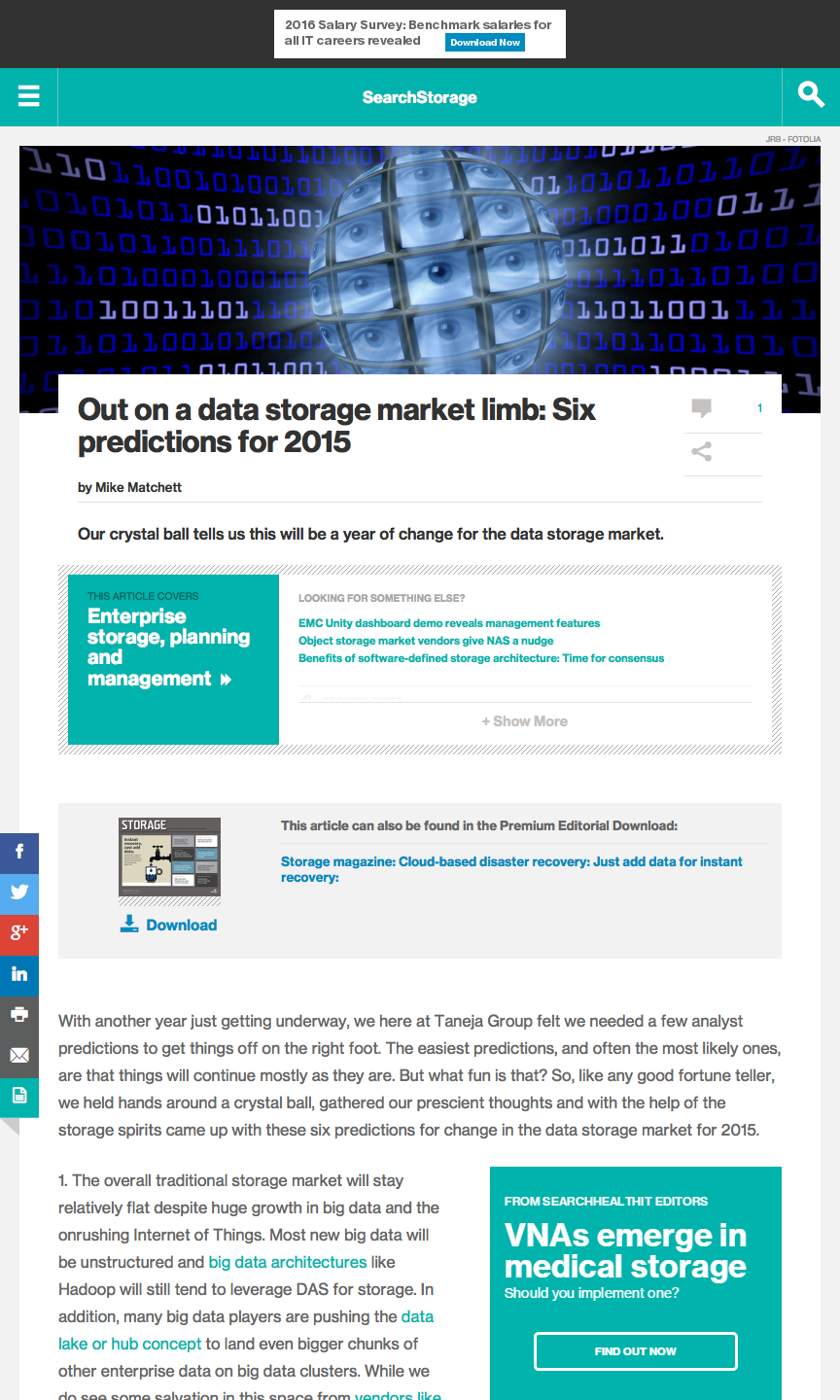Out on a data storage market limb: Six predictions for 2015

An IT industry analyst article published by SearchStorage.
Our crystal ball tells us this will be a year of change for the data storage market.
 With another year just getting underway, we here at Taneja Group felt we needed a few analyst predictions to get things off on the right foot. The easiest predictions, and often the most likely ones, are that things will continue mostly as they are. But what fun is that? So, like any good fortune teller, we held hands around a crystal ball, gathered our prescient thoughts and with the help of the storage spirits came up with these six predictions for change in the data storage market for 2015.
With another year just getting underway, we here at Taneja Group felt we needed a few analyst predictions to get things off on the right foot. The easiest predictions, and often the most likely ones, are that things will continue mostly as they are. But what fun is that? So, like any good fortune teller, we held hands around a crystal ball, gathered our prescient thoughts and with the help of the storage spirits came up with these six predictions for change in the data storage market for 2015.
- The overall traditional storage market will stay relatively flat despite huge growth in big data and the onrushing Internet of Things. Most new big data will be unstructured and big data architectures like Hadoop will still tend to leverage DAS for storage. In addition, many big data players are pushing the data lake or hub concept to land even bigger chunks of other enterprise data on big data clusters. While we do see some salvation in this space from vendors […] that enable big data analysis to leverage traditional enterprise storage, it won’t be enough to make a big dent in 2015.We’ve also noticed that many storage shops have yet to take advantage of the emerging capacity optimizations now available (e.g., thin provisioning, linked clones, global deduplication, inline compression and so on) in recent versions of competitive arrays that are becoming table stakes for new acquisition decisions. Hybrid arrays, in particular, are bringing flash-enabling space efficiencies across their full complement of storage tiers, and most arrays these days are turning at least hybrid.
- Speaking of flash, there are too many all-flash array (AFA) vendors and not enough differentiation. During 2012/2013 the first AFA vendors had the market to themselves, but with all the big players rolling out full-fledged flash offerings, opportunities are declining. With [many vendors] all pushing their own solutions (both AFA and hybrid), the remaining independent vendors will have a harder time finding a niche where they can survive. We also expect to see a new round of very high-end performance storage architectures in 2015[…]As a related trend, we anticipate that hybrid-based Tier-1 arrays will lose ground to AFAs in general, as the cost of flash drops and flash performance proves valuable to most if not all Tier-1 I/O. In virtualization environments, this trend will be somewhat lessened by the rise in popularity of server-side flash and/or memory caching/tiering solutions.
- Data protection and other add-on storage capabilities will become more directly baked into storage solutions. We expect to see more traditional arrays follow the examples of
…(To read the complete six item prediction see as-published article over there)
